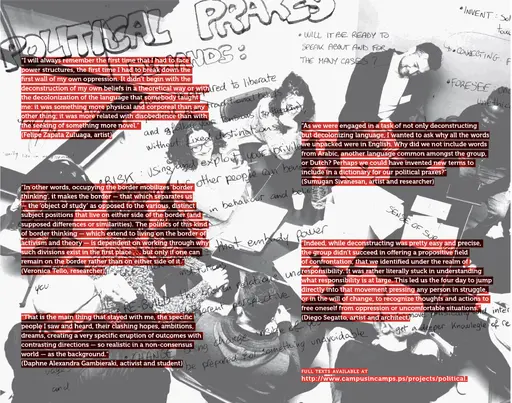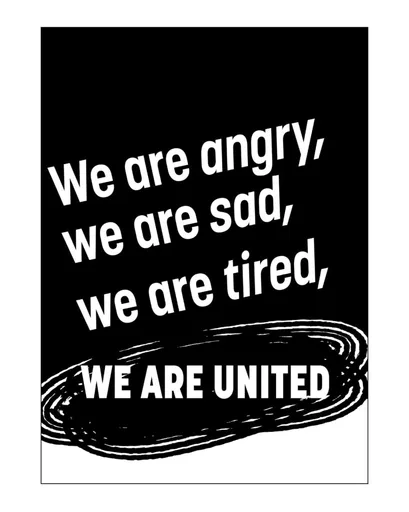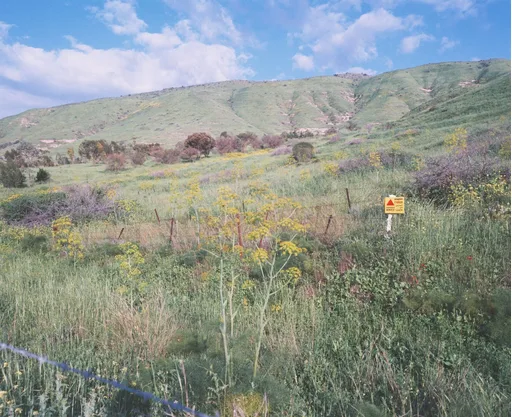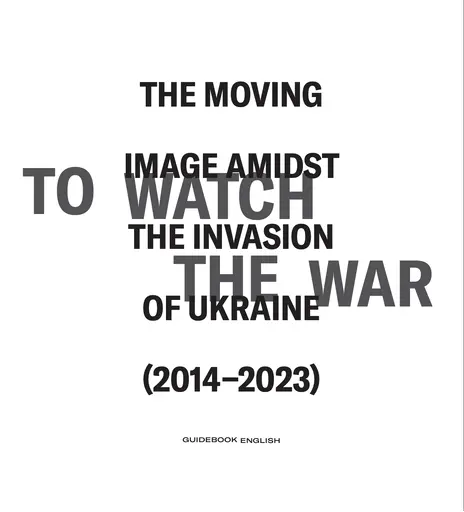“To Read the War” is an assemblage of texts, visual essays, interviews, conversations, and even entire publications from BAK, basis voor actuele kunst’s archive[1] and beyond, republished here on BAK’s digital forum, Prospections. Hurtled into being in these devastating days of escalating violence in Palestine, it coincides with BAK’s long-term series To Watch the War, In Solidarity and the moving image forum To Watch the War: The Moving Image Amidst the Invasion of Ukraine (2014–2023).
“To Read the War” is an assemblage of texts, visual essays, interviews, conversations, and even entire publications from BAK, basis voor actuele kunst’s archive[1] and beyond, republished here on BAK’s digital forum, Prospections. Hurtled into being in these devastating days of escalating violence in Palestine, it coincides with BAK’s long-term series To Watch the War, In Solidarity and the moving image forum To Watch the War: The Moving Image Amidst the Invasion of Ukraine (2014–2023).
“To Read the War” is prepared in solidarity with all those subjected to war of every kind. If solidarity is a multiplicity of generative pathways to become more in both the resistance to oppression and a building of a just world, this is an attempt to make time for reflection when we are out of time—when war necessarily absorbs all we can think and do. As a form of respite in spite of the incessant feeds of mediatized warfare, here we take an opportunity to read, think, imagine, and act. A form of critical and propositional intervention, “To Read the War” attempts to hold ground—to read, think, and learn with one another—for a concrete possibility of a world of justice and equality by insisting on historical facts as much as artistic imaginaries for the not-yet. We propose a mode of reading that actively refuses, subverts, and probes the ways in which we are implicated and subjected to wars—especially through the dominant gazes of media and military technologies—and goes against the grain of all that serves to enable and facilitate a binary logics of divisions and hierarchies in human worth.
Over the following weeks and months, on this very forum, we publish and publish anew the work of artists, scholars, activists, and cultural practitioners who help us find language for resisting the conditions of the world that allow so very few to flourish at the expense of so many that suffer, and, in parallel, help us to imagine and organize a world in which livable life in common is not only desired but made possible—the world otherwise.
Maria Hlavajova and Wietske Maas, 18 October 2023
[1] This impromptu composition includes a selection of previously printed matter from past and ongoing long-term projects at BAK, including Concerning War (2005, 2010), Former West (2006–2016), and Propositions for Non-Fascist Living (2017–ongoing), to name but a few.
Related

In April 2016, BAK, basis voor actuele kunst, brought to life the Here We Are Academy: a spirited temporary recomposition of a refugee-initiated platform for learning called We Are Here Academy.

We at BAK, basis voor actuele kunst stand in full allyship and solidarity with ruangrupa, all artists and activists of documenta fifteen, and the broader lumbung ecosistem. The collective learnings of decolonial praxis that this edition of documenta have brought to Kassel have been an important and invaluable achievement. This labor reveals the urgency of addressing racist and imperial political agendas perpetuated in Germany today. To echo the words of writer and researcher Sami Khatib:
“To Read the War” is an assemblage of texts, visual essays, interviews, conversations, and even entire publications from BAK, basis voor actuele kunst’s archive[1] and beyond, republished here on BAK’s digital forum, Prospections. Hurtled into being in these devastating days of escalating violence in Palestine, it coincides with BAK’s long-term series To Watch the War, In Solidarity and the moving image forum To Watch the War: The Moving Image Amidst the Invasion of Ukraine (2014–2023).

“Scarecrows” is a visual essay by artist Jumana Manna. Here, Manna images daily acts of defiance by Palestinians foraging wild plants for food and medicine; something their survival had depended on for centuries. These humble resistances take place in the face of the legal prohibitions imposed by the State of Israel. The thinly veiled imperialist and racist laws, disguised as preservation decrees protecting plants and other species, are aimed, de facto, against the very possibility of people sustaining their lives on their own lands. “Lands that, in many cases,” Manna stresses, “have been expropriated by the Israeli state and are administered as Israeli settlements, nature reserves, military training areas, and other forms of ‘state land.’” The state here, indeed, continues usurping the power to decide “what is made extinct and what gets to live on; about who gets to decide the fate of these foraging traditions and the options that remain for those who don‘t.”

To Watch the War: The Moving Image Amidst the Invasion of Ukraine (2014–2023) Guidebook English , is the guidebook to the moving image forum To Watch the War: The Moving Image Amidst the Invasion of Ukraine (2014–2023), exhibited at BAK, basis voor actuele kunst, Utrecht 9 September–29 October 2023.